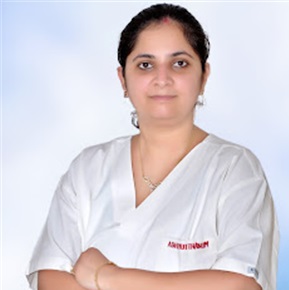Endometriosis treatment is a subject that has many theories based on a lot of trial and error. The reason there is no clear cut treatment is that no one really knows what causes this disease. Most treatments are used to help control the disease and mitigate the symptoms it causes.
The symptoms of endometriosis affect the women who suffer them in different ways. Most women notice an increase in symptoms as their menstrual period approaches and begins. In rarer cases the symptoms persist throughout the month. The discomfort and pain is normally localized in the pelvic, abdominal or lower back regions. The severity of the pain caused varies from woman to woman. Endometriosis can also cause heavy menstruation and in severe cases infertility. Best Gynecologist in Kota
The first step to endometriosis treatment is getting properly diagnosed. Women who experience endometriosis symptoms should see their gynecologist. In some cases an ultrasound or MRI can detect the small endometrial growths but a definitive diagnosis can only be made through laparoscopic surgery. Laparoscopy is a minimal invasive procedure in which a thin tube with a light and camera on the end is inserted into the abdomen. This gives the doctor a real time view of any endometrial lesions, their size and extant of their growth. Once a positive diagnosis is made treatment options can then be discussed and considered.
Endometriosis Treatment - Options for Treating Endometriosis
When an endometriosis treatment plan is being discussed there are several points that need to be considered by the woman and her doctor.
• How severe are the symptoms
• What type of symptoms is she having
• How old is she
• Is she trying to get pregnant
• How long should the treatment last
• What side effects will drug treatment have
• How much will it cost
Once these questions are answered a treatment plan for endometriosis can be made.
Understanding what causes endometrial cells living outside the uterus to grow is important in knowing why certain treatments work better than others. Endometriosis is a disease driven by a woman's hormonal cycle and in particular estrogen. As a woman's estrogen levels increase through the month endometrial tissue in the uterus thickens with blood and nutrient rich tissue as it prepares for a fertilized egg. Any endometrial tissue outside the uterus in the abdomen responds in the same fashion. Laparoscopic Gynecologist in Kota
Hormone endometriosis treatment works by limiting or controlling the amount of estrogen produced by a woman's body. Lowering the estrogen level limits the amount of growth the endometrial cells can undergo thereby limiting the irritation and inflammation they cause.
The hormone control drugs used in the treatment of endometriosis include:
• Birth control pills
• Gestrinone
• Danazol
• GnRH agonists
• Progesterone hormone tablets
Using hormone drugs as an endometriosis treatment is generally prescribed for women who have milder cases of the disease. Hormonal treatments suppress the ability of the endometrial cells to thicken with blood thereby helping to relieve the symptoms. By reducing the amount of estrogen the drugs "starve" the endometrial tissue causing them to shrink and become inactive.
Drug treatment only works during the time the woman is taking the medication. It is not a cure but a way of managing the endometriosis. If and when the drug treatment stops the endometriosis will become active again over a period of 12 to 24 months.
Women with more severe forms of endometriosis normally need to look at the surgical option of endometriosis treatment. When there are endometrial lesions over 3cm in diameter and/or a large number of adhesions the chances of those responding to drug treatment are minimal.
The most common form of surgical endometriosis treatment is laparoscopy. Also known as keyhole surgery, laparoscopy is a minimally invasive surgical procedure in which a small quarter inch incision is made just below the belly button. The laparoscopic instrument, which has a small light and camera attached, is then inserted into the abdomen and the surgeon can search out and destroy any endometrial tissue they find.
Endometrial lesions are destroyed using a procedure known as diathermy. An electrical current is passed down a fine probe attached to the laparoscopic instrument and is used the burn the lesion off the surrounding tissue. In some cases lasers are also used to the same effect. Other surgical instruments such as small scissors and scalpels can also be used the remove the endometrial tissue. This type of surgery has a 70% success rate in improving the pain causing symptoms of endometriosis.





Comments